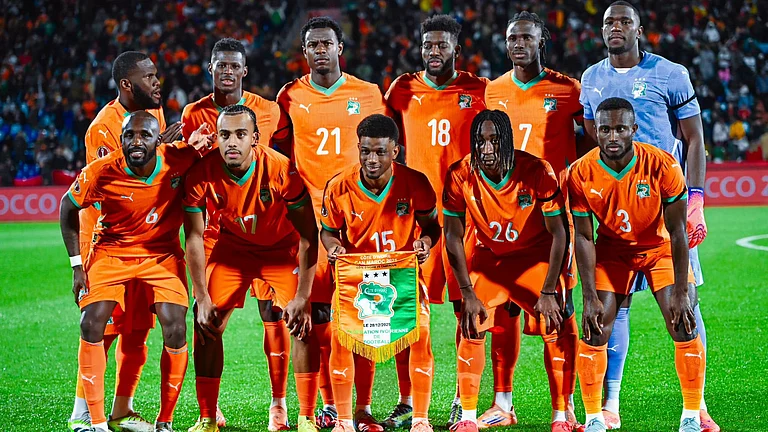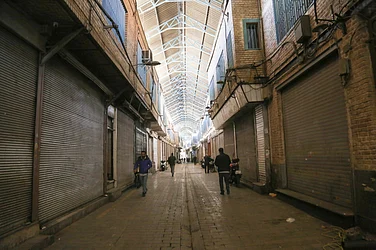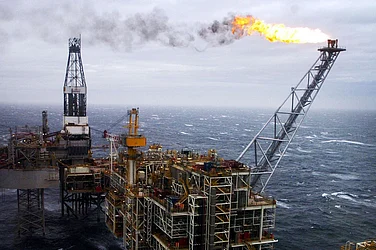Ukraine and Russia have long grappled with a history of deep-rooted conflict, a narrative that reached a critical juncture in 2022 when Russian forces advanced into Ukraine on February 24, 2022, launching a “special military operation” allegedly aimed at “protecting the people in the Donbas region” and demilitarising Ukraine.
At least 10,000 civilians have been killed in Russia’s ongoing war on Ukraine and over 18,500 injured according to the United Nations Human Rights Monitoring Mission’s latest report.
Previous disputes, including the annexation of Crimea in 2014, the gas disputes in 2006 and 2009, and the Orange Revolution in 2004, have laid the groundwork for the complex geopolitical landscape and heightened tensions evident in the present day.
Russia’s Ongoing War On Ukraine
The current conflict in Ukraine began on February 24, 2022 with Russian military forces entering the country from Belarus, Russia, and Crimea. President Putin declared it a "special military operation" with the goals of protecting the people in the Donbas region and aiming to "demilitarise and denazify Ukraine." Putin explicitly denied intentions to occupy Ukrainian territory or forcibly impose any measures on the country.
Following the Russian attacks, President Zelenskyy declared a complete military mobilisation, imposing a ban on men aged 18-60 from leaving Ukraine. Fierce fights broke out in Kyiv, as Russian forces attempted to advance towards the city centre from various directions.
The conflict escalated significantly in the following days as Russian forces intensified their military actions. Rocket attacks were launched, resulting in the deaths of "dozens" of civilians in Kharkiv. Russian forces tightened their siege on key cities, including Kyiv and the southern port of Mariupol. In response to the escalating situation, President Zelenskyy appealed to Western nations, urging them to enforce a "no-fly zone" over Ukraine.
Many experts expected Kyiv to fall swiftly. But after weeks of fighting, Russia pulled back, stymied by ferocious resistance. Evidence of Russian atrocities emerged in the wake of the retreat.
Although “humanitarian corridors” were agreed upon, the Russians didn’t stop bombing cities making it almost impossible for Ukrainians to flee. On March 22, UN Secretary-General António Guterres delivered a stark message to Russia, stating, "this war is unwinnable." He urged an immediate ceasefire and a diplomatic solution to the crisis.
By the end of May, the toll had surpassed 4,000 deaths and nearly 5,000 injuries, with schools, hospitals, and shelters targeted in bombings. Most of the casualties occured in Donetsk and Luhansk where Russia-backed militants were active.
The last Ukrainian fighters surrendered in Mariupol, a port city and industrial hub on the Sea of Azov, after several weeks of bombings that killed thousands of civilians. The fighting ended with a siege of the Azovstal steel plant, which had become a symbol of Ukrainian resistance.
However, after several months of enduring an initially overwhelming assault from Russia, Ukraine shifted the dynamics by launching resilient counteroffensives. They reclaimed areas like Snake Island and land near Odesa, followed by parts of Kherson and Kharkiv. Despite facing setbacks, Russia annexed some Ukrainian regions.
Ukrainian forces also achieved significant victories, including the withdrawal of a large number of Russian troops from Kherson to the the eastern side of the Dnipro River. Drone attacks in December targeted Russian military bases, and in January 2023, Ukrainian forces struck a building in Donetsk. Despite a renewed Russian offensive in February, Ukraine held its ground, inflicting heavy losses on the invading forces.
Following a winter stalemate, Putin's announced offensive surge in February to take all of Donbas by March 2023 faced limited progress, culminating in a prolonged siege of the town of Bakhmut. By late May, Russia claimed to have captured the city, but Ukrainian forces continued to resist, prompting a shift to offensive actions. On June 6, a breach in the Nova Kakhovka dam caused severe flooding in southwest Ukraine, with both Russia and Ukraine blaming each other.
In the same month, Ukraine launched a counteroffensive in Donetsk and Zaporizhzhia provinces, aiming to liberate much of the occupied territory, but faced strong resistance, heavy losses, and challenges from Russia's defensive positions. On June 23, a major internal challenge arose for Putin when Yevgeniy Prigozhin initiated a mutiny within Wagner forces, seizing key military locations in Russia. The incident, marked by tensions with the Russian Ministry of Defense, left both Wagner and Putin weakened.
In August, Ukrainian special forces executed a maritime raid on Crimea. This marked the first of multiple brief incursions into the heavily fortified Russian-occupied peninsula. A significant event unfolded on September 13 when a Ukrainian missile strike severely damaged a submarine and a ship at Russia's Black Sea Fleet main port in Sevastopol, Crimea. Following this, on September 22, Ukraine targeted the fleet headquarters.
In November, Ukrainian Commander-in-Chief Gen. Valery Zaluzhny noted a technological stalemate akin to World War I, stating that after months of incremental gains, both Ukraine and Russia had reached a technological impasse.
In the year and a half since Russia’s full-scale invasion, Ukraine has recaptured 54 percent of occupied territory, while Russia still occupies 18 percent of the country


























